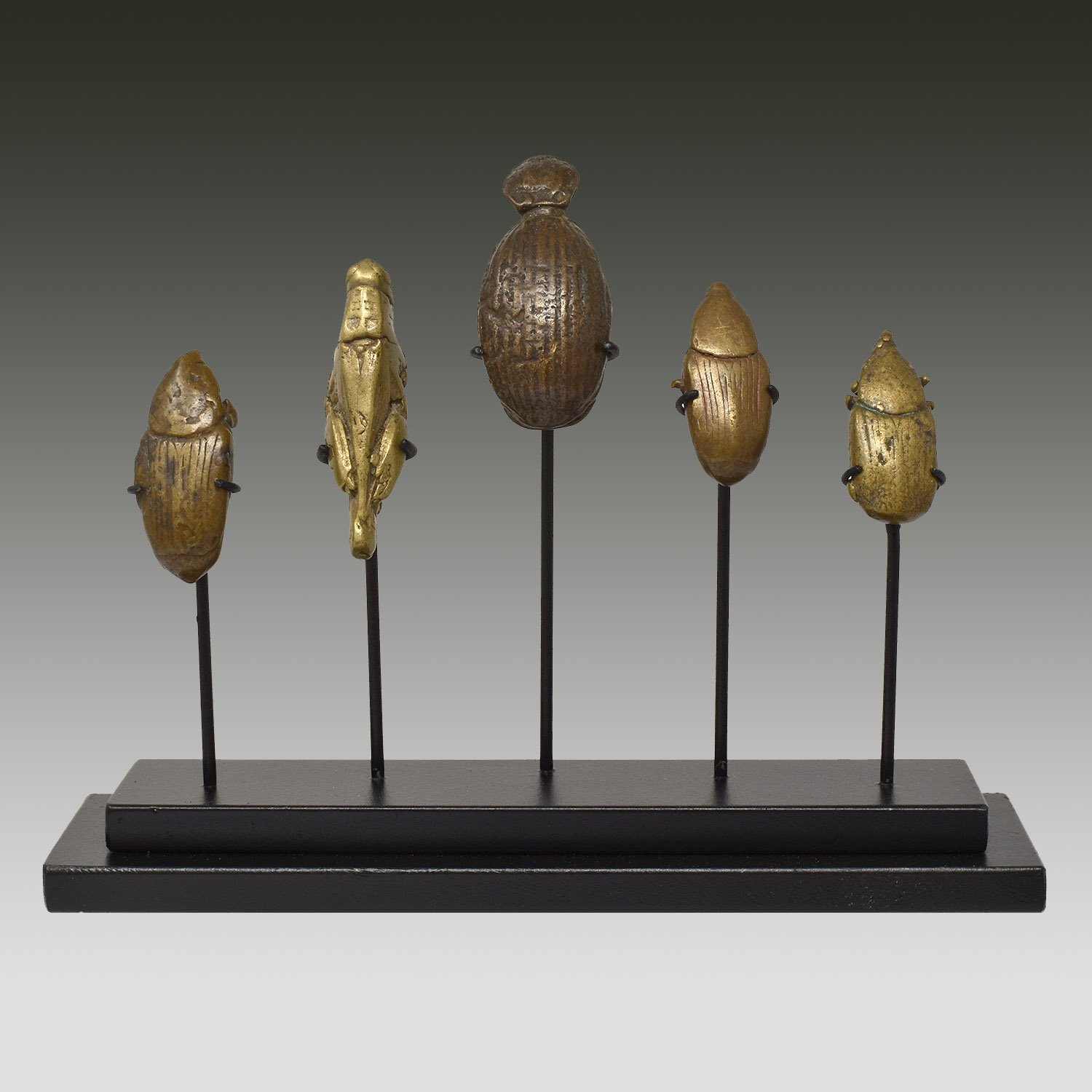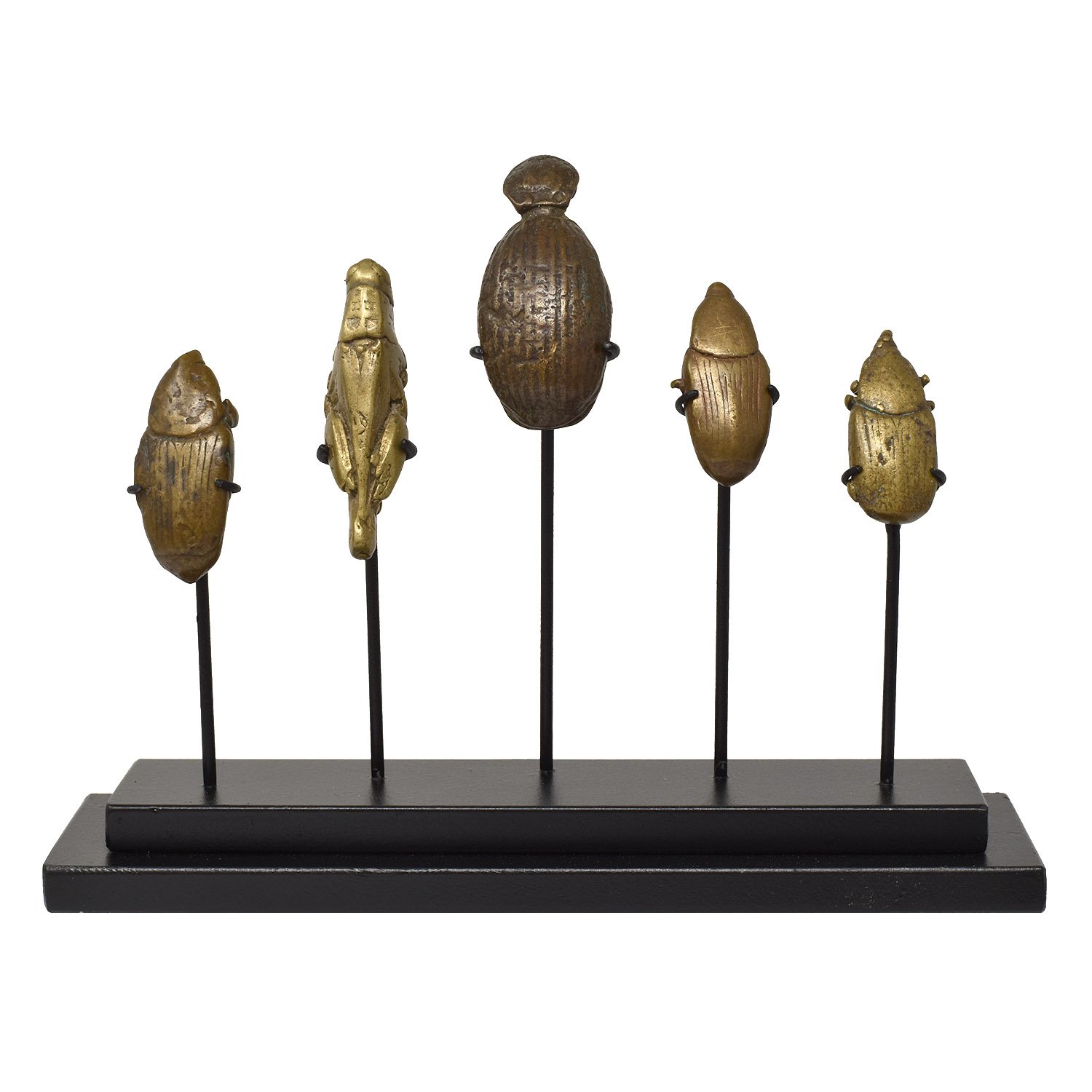Goldweight: Hornbill and Snake, Ghana




Goldweight: Hornbill and Snake, Ghana
Akan / Asante, Ghana
Bronze
19th Century
1.125 x 1.75 x 0.75 in./ 2.75 x 4.5 x 2 cm
Height on custom display stand: 2.75 in. / 7 cm
A description of this scene posted on the AHDRC databse:
According to legend, the hornbill was deeply indebted to the snake but did not pay its debts because it reasoned that it could always fly away if the snake tried to catch it. This tactic was successful until it got careless one day and the snake, which had been waiting quietly and patiently for just this opportunity, caught it.
The weights of the Akan peoples of the former African Gold Coast were in use from about 1400 to 1900, for the weighing of gold dust.
Before the 16th century, gold weights were mainly geometric in design. The "newer" figured weights were intended for practical use as prestige weights and usually represented Akan proverbs, i.e., You cannot think you could teach a fish to swim.
Goldweights were made from copper alloys using the lost wax technique (also called "cire perdue" or "lost mold").
In 1899 the use of gold dust as a means of payment was banned in Ghana by the British.
Domestic shipping included. International shipping is quoted separately.









